 |
 |
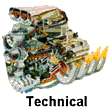 |
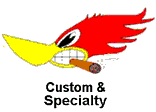 |
 |
 |
 |
 |
 |
 |
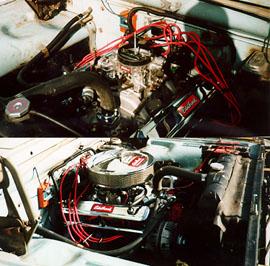

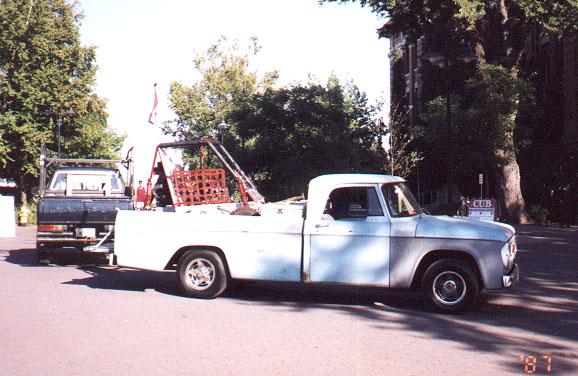 |
|---|
| Above is a more recent photo of my truck, which happens to be sitting on the center of the WSU Campus on the Glen Terell Mall. This shot was taken sometime around September of 1998. Note the wheels and correct-year `67 grille. (finally got that darn thing on the truck) |
Keith Black Dyno runs under the Windows 3.1 or Windows 95/98 operating system. It is fairly straightforward to use, and includes basic engine setups to "build" onto. I simulated my `67 D-100's 318 in this program and found that it was somewhat conservative on the ratings. Also, you can tell by the "simple" numbers that it doesn't calculate things to a great degree of precision. Still, it is an excellent tool for building your favorite engine with a few modifications. Click here to see a screen shot of the chart supplied by KB Dyno after all my 318 parameters were set. The program also outputs a table of values for a variety of RPM values around the peak range. This was computed on the first version of KB Dyno, and there is currently a more modern version called Virtual Dyno with more variable parameters and better output. For the hard core engine builder or professional, they also offer Controlled Induction. This software package helps the user to choose the best performance configuration for a particular RPM level.
Desktop Dyno is probably the most well known engine simulation software in the Hot Rodding world. It runs in MS-DOS but can simulate almost any engine combination imaginable from one to twelve cylinders. The benefit of having a program like Desktop Dyno is the sheer number of input variables and the way that the program calculates its values from your inputs. This program actually calcuates values for horsepower and torque by using thermodynamic engineering formulas, which will ultimately lead to a better simulation when the numbers are crunched.
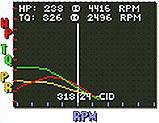
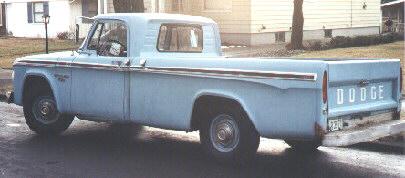
The next owner was a racer who pulled a race car on a trailer behind it. This owner wasn't so careful and kind to Old Blue. He had added a few dents here and there before he was finished.
It was then sold in the late seventies to my grandfather who had the body fixed and the engine replaced. The truck's original engine was most likely a LA-318, but whoever replaced the engine for him was smart and put a "unleaded friendly" '73 LA-318 engine in for the hardened valve seats. Grandpa drove it daily for maybe 2-3 years and then kept around to use as a hauler, only racking up 100-200 miles a year.
In 1992, he passed away leaving me the truck. I have driven it daily since Feburary 1994.
Since then, I've put my talents to work to improve it. Adding such things as American Racing AR-762 wheels and a set of better handling 235-70R15 tires started it off. A decent cassette deck was next to provide tunes for the passengers to enjoy. I have also yanked the engine and added Edelbrock Performer Series intake manifold and carb, Melling RV cam, Hedman Hedders, dual exhaust with Dynomax Super Turbo mufflers and 2 1/4 pipes, chrome here and there, and most recently the Mopar Performance Electronic Ignition conversion kit. All for better performance of course.
The cab was badly rusted out around the rocker panels and front cab mounts, so I found a '66 cab that was rust free and swapped them. The only real problem was the door catches because they didn't match up. I ended up welding in the correct catches from the old cab to make things work right. Otherwise, Old Blue now gets me to and from this college town(Pullman) and home(Spokane) with a big smile on my face.
